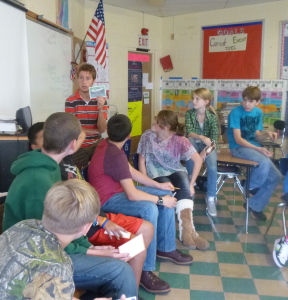
Feb 18, 2015 Differentiated Instruction: Don’t Dismiss It!
Wood N Barnes Publishing Co. is continuing to share excerpts from my new book: Inspired Educator, Inspired Learner: Experiential, Brain-Based Activities and Strategies to Engage, Motivate, Build Community, and Create Lasting Lessons. This week’s article on differentiated instruction combines discussion of a pedagogical concept with an activity to illustrate application to teaching or training.

Differentiated Instruction: Don’t Dismiss It
If the only tool you have is a hammer, you tend to see every problem as a nail. —Abraham Maslow, founder of humanistic psychology
John Dewey and Jean Piaget were both early proponents of what we now call differentiation or differentiated instruction. They believed in a learner-centered approach and thought it was important to consider the unique differences of each learner who comes to the classroom—taking into account his or her own personality, strengths, abilities, challenges, and past experiences—recognizing that, because they are individuals, they will experience lessons differently. Dewey (1897, 1900) and Piaget (1926) believed good educators take this into account and design lessons in a way that allows for, and even embraces, these differences. In his theory of experience, Dewey emphasized that an experience that might be beneficial for one student could be detrimental to another. He advocated that the role of the educator was to be aware of this individuality and use this information to guide learners through lessons in a way that was appropriate for them and in a way that allowed them to take ownership and responsibility for their learning.
Differentiation has, unfortunately, received bad press or been dismissed by some in the education field because it has been misinterpreted as requiring the teacher to create individual lesson plans for each student day in and day out. Carol Ann Tomlinson (2013), a leading modern-day proponent of differentiation, defines it as a commonsense, student-centered, empathetic approach in which the teacher believes, if they know who their students are, they can see the world through their point of view. This allows the teacher to provide leadership and clarity around the goals of lessons. In differentiation, teachers believe that all students can be successful as long as they are willing to work and as long as the teacher is willing to work. Tomlinson points out the connection with brain-based research, emphasizing the importance of a safe and supportive environment along with positive emotional associations to learning. She stresses the importance of… to read more click here to visit the Wood N Barnes blog.



No Comments